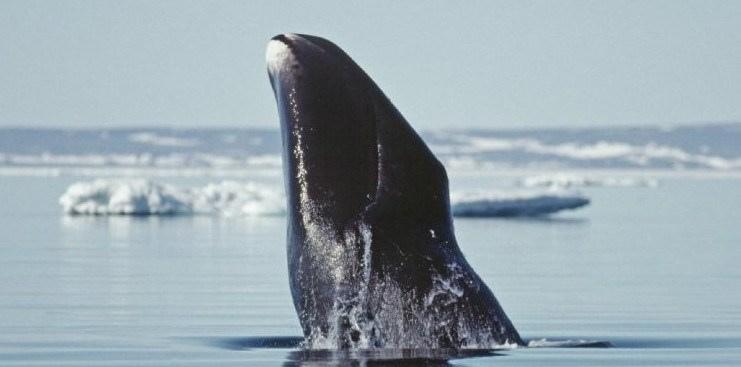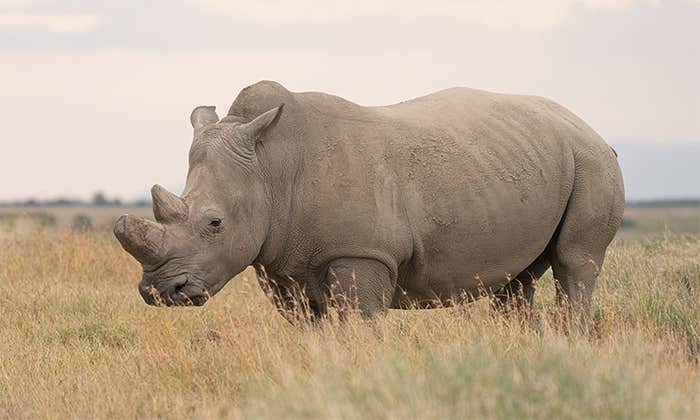It’d be easy to miss the unobtrusive brown door to Joon Yun’s second floor office, tucked away next to a dry cleaners and a hair salon in downtown Palo Alto, California. But the address itself speaks loud enough.
Four-hundred-seventy University Avenue is located in the heart of a neighborhood that holds a special place in the lore of Silicon Valley start-up culture. A few minutes’ walk away are the early homes of PayPal, Facebook, and Google. Yet the early ambitions of these famous companies are modest when compared to the ideas I’ve come to discuss with Yun.
I’ve been led here by Sonia Arrison, a Silicon Valley local and author of 100-Plus: How the Coming Age of Longevity Will Change Everything, From Careers and Relationships to Family and Faith. Arrison has agreed to show me around her strange Californian world, populated with very wealthy, very smart dreamers, who share her certainty that a longevity revolution is on its way. We’ve arrived on Yun’s doorstep to learn how and why he, along with a small group of big power players, plan to “cure” aging and extend human health span—and possibly even human life—by decades, if not centuries.
For Yun, a dapper, 40-something physician and prominent Silicon Valley money manager, the origins of his quixotic dream date back to his time as an undergrad at Harvard University.
“I essentially made a wager to myself that aging is a code,” Yun explains to me from across a shiny conference table. “If aging is a code, that code could be cracked and hacked. The current system in healthcare is a whack-a-mole of your symptoms until you die. It addresses the diseases of aging, but not curing the underlying process behind aging itself. The healthcare system is doing a good job of helping people live longer and stronger lives, but aging is still a terminal condition.”
In 2014, Yun created the Race Against Time Foundation and Palo Alto Prize, which will award $1 million to a team that can demonstrate the capacity to mitigate aging by, among other things, extending the life of a mammal by 50 percent.
“You need people to do incremental science and you need people to do long-shots,” Yun says. “I believe it’s inevitable we’re going to solve aging at some point.”
Faith that science will conquer aging is common in Silicon Valley these days. The language Yun uses to explain his dream—especially the use of the word “cure”—makes traditional researchers in the field of aging cringe. But few are complaining about the interest of the big-spending Silicon Valley crowd. In recent years, public institutions like the National Institutes of Health have been slow to commit any more than a token of their overall budgets to aging research. It is the private funders with big dreams who are galvanizing the field.
The Ellison Medical Foundation has spent nearly $400 million on longevity research. Oracle founder Ellison told his biographer, “Death makes me very angry.” PayPal cofounder and venture capitalist Peter Thiel helped fund the SENS Research Foundation, a longevity organization co-led by British gerontologist Aubrey de Grey, who’s argued we might someday halt aging and extend life indefinitely. (Arrison, Thiel’s longtime friend, introduced the two.)
In 2013, the founders of Google launched Calico, short for California Life Company, to research aging and associated diseases. A year later Calico teamed up with the biopharmaceutical company AbbVie, with which it plans to invest up to $1.5 billion to develop age-related therapies. “With some longer term, moonshot thinking around healthcare and biotechnology, I believe we can improve millions of lives,” wrote Google cofounder Larry Page.
The quest to extend longevity makes perfect sense in Silicon Valley, explains Lindy Fishburne, a longtime lieutenant of Thiel’s, in her stately office in San Francisco’s Presidio, a former military base that sits on a pictorial tip of the San Francisco Bay. “It’s the engineering culture which says we’ll build our way out of it, we’ll code our way out of it, there has to be a solution. I also think it’s coupled with a very unique optimism that is pervasive in Silicon Valley.”
“The current system in healthcare is a whack-a-mole of your symptoms until you die.”
The big goal of the Silicon Valley titans is not to extend longevity by beating back cancer, heart disease, Alzheimer’s disease, or any of the other diseases that most of us succumb to. Rather it’s to use molecular biology to decode the very mechanics behind the process that is the biggest single risk factor in all of these diseases—the process of aging itself—and to attempt to halt it in its tracks. In recent years, researchers have made undeniable strides in decoding the cellular processes that go awry as we age.
The mainstream press has amplified the research into the second coming of Ponce de Leon. “Can Google Solve Death?” read a Time magazine cover in 2013. Veteran aging scientists bristle at the invocation of the “I” word (immortality). Even the most leading-edge studies in molecular biology today, they point out, including those done by the top scientists recruited to work for Google’s Calico, do not promise aging—let alone death—can be solved or cured.
The hype “has a bad effect because it makes the field look like we’re focusing on something that is not achievable,” says Felipe Sierra, the director of the Division of Aging Biology at the National Institute on Aging, of the NIH. It also obscures the significant research that is being done to identify the mechanisms of aging. “The positive side is that people are starting to understand that our goal is to improve health for everybody and not the particular patient that has one disease. It’s a more holistic approach.”
The interest of Silicon Valley and private funders has done more than that. They have helped to shift the target of research from addressing diseases associated with getting older to the core processes of aging itself. According to scientists and insiders in aging research, the ingestion of private money into the field has been a culturally disruptive force with tremendous potential benefits. And the science is here to prove it.

For decades aging research was an obscure and unappreciated field, tainted by a history of exaggerated claims and sloppy science.
Gary Ruvkun, a molecular biologist and professor of genetics at Harvard Medical School, recalls that when his scientific explorations led him into the field in the 1990s, “you would whisper that you were working on aging because you didn’t want to destroy your day job. You wanted to have people respect what you did.”
“Aging research was a little bit of a backwater,” Ruvkun says. “It didn’t have high visibility and big names.”
In part that was because aging seemed such an intractable problem. Many believed natural selection was blind to mutations that affected the body after humans passed reproductive age, leading to an irreversible collapse of our bodies and minds. Funding to characterize this process, therefore, was often hard to come by, as medical companies are looking for quick payoffs, and public agencies are loath to back theoretical projects.
Veteran aging scientists bristle at the invocation of the “I” word (immortality).
NIH review panels “tend to be conservative because there isn’t a lot of money and they like to fund things that are certain to succeed,” says David Sinclair, a professor of genetics at Harvard Medical School, and co-director of the Paul F. Glenn Center for the Biological Mechanisms of Aging, a wing of the Glenn Foundation for Medical Research, one of the largest private funders of aging research. “Finding a molecule that would slow down aging was considered crazy.” (The Glenn Foundation is a funder of this issue of Nautilus.)
The embrace of private funders helped change that. “They were the tinder that got the field going,” Ruvkun says. Paul F. Glenn made a fortune in finance and started the Glenn Foundation in 1965. He helped lobby Congress to create the National Institute on Aging (NIA), and his money helped recruit and nurture the research of reputable scientists, notably Cal Tech’s Seymour Benzer, a giant in the field of genetics, who was one of the first big names to develop an interest in the science of aging. Benzer was a pioneer in the characterization of genetic recombination, performed seminal work with fruit flies, and founded the field of behavioral genetics.
Ellison’s foray into the field in 1997 was a key turning point. It was spurred by his relationship with Josh Lederberg, a Nobel laureate and molecular biology pioneer. Lederberg made sure some of the money was used to help attract much needed gravitas to the field. Lederberg recruited academic superstars like Columbia University neuroscientist Eric Kandel, another Nobel laureate, and devoted a significant portion of the foundation’s money to funding scientists who had already established themselves in other fields.
The Ellison foundation was “very sophisticated about the sociology of science,” says Ruvkun. “They made sure that about half the people that they funded were very well known in their fields—again, increasing the status of aging research. I thought it was extremely shrewd what they did.”
At the same time, Ellison and Lederberg placed a much needed emphasis on funding ideas that were too far ahead of their time, or out of the mainstream, to win funding from the more conservative NIH. The Ellison foundation’s stated goal was to “favor basic research that was too risky or speculative to attract mainstream funding” and to give money and then “stand back.” This often meant funding young, up-and-coming scientists with big ideas.
“I may not even be at Harvard today without that money,” Sinclair says. “When you are young, it’s hard to get grants, so getting an Ellison scholarship allows you not to worry so much about running out of money at a critical stage in your career.”
None of the private money would have had much of an impact was there not emerging science to support. In the 1990s a small group of pioneers had begun applying the emerging tools of molecular biology and genetics to the science of aging. Two discoveries in particular electrified the field and helped inspire a new generation of longevity researchers.
Harvard’s Ruvkun was studying roundworms, attempting to decode the molecular underpinnings of “dauer diapause,” a state of suspended animation in which their metabolism slowed down dramatically, and fat storage went up. This state was associated with a much longer lifespan.
Following earlier work by Michael Klass and Thomas Johnson, both of whom made important discoveries while at the University of Colorado, Ruvkun, in 1993, discovered the key was a set of genes that regulated a pathway analogous to the insulin system in human beings—pathways that directly affect, and can slow down, metabolism and energy expenditure. In humans, insulin is the hormonal signal that cues our cells to absorb sugar and convert it to energy, which in turn affects a large number of other cellular processes, including the rate of cellular division, which many believe is directly related to aging.
Working independently at around the same time as Ruvkun, molecular biologist Cynthia Kenyon, at the University of California, San Francisco, discovered that when she created a single mutation in this pathway in the worms (in a gene called Daf-2), she could double the worms’ lifespan from two to three weeks to six weeks. Another mutation known as daf-16m could reverse this impact. These discoveries had a profound impact on the field. (It’s no surprise that one of Calico’s most prominent hires has been Kenyon; the company lured her away from UCSF in 2014 to serve as its Vice President for Aging Research.)
In the 1990s, notes Sierra, it was known, based on studies of identical twins, that about 30 percent of longevity could be attributed to genetics. But nobody believed that it was possible to find individual genes that could have such a profound effect. “It was a revelation at the time,” says Sierra. It was “a game changer” because it suggested it might be possible to develop drugs for humans that would have an impact on longevity without targeting specific diseases. The process of aging itself might be manipulated.
Suddenly the genetics of aging was no longer “just a very fuzzy thing,” but something that might be manageable to those who wanted to study it, Sierra says. “It allowed us to start studying aging in a more mechanistic manner. It became a more acceptable thing in the scientific community because scientists want to know mechanisms.”
Experiments have demonstrated that a tweak in the insulin pathway can cause a mouse to live a lot longer. There have been some tantalizing suggestions this might be a lever in humans. Studies of a rare population of human dwarfs in Ecuador who have mutations that produce low amount of human growth hormone (HGH) and insulin-like growth factor, found no diabetes, and far lower rates of cancer and strokes (though a prevalence in alcoholism seemed to nullify gains in life expectancy). And studies examining the genes of human centenarians, Ruvkun notes, show “an enrichment of people with genetic weirdisms in the insulin pathway.”
Since then a small group of molecular biologists have applied the improving tools of modern genetics to the questions of aging and longevity, and uncovered more secrets. By breeding strains of baker’s yeast, fruit flies, and worms to live extra-long, and then working backward to find other genetic variants common to these strains, molecular biologists in the early 2000s were led to mutations affecting what’s known as the “TOR pathway” (named for compound that led scientists to it, rapamycin). Pharmacologists had demonstrated that rapamycin, which is produced by bacteria, dramatically slows the growth of some kinds of cells placed next to it in a petri dish. It does so by “turning down” its target (the TOR pathway). As a result, doctors have been using it as an immunosuppressant for transplant patients and to slow certain forms of cancer.
But in 2009, a consortium funded by the National Institute on Aging showed that rapamycin could extend the lives of mice equivalent to age 60 in humans by between 9 and 14 percent. Rapamycin also seemed to have positive effects on age-related diseases such as cancer and Alzheimer’s in mice.
In 2014, Novartis, the private pharmaceutical giant, conducted a study on elderly humans using a compound derived from rapamycin. Since aging-related conditions progress far slower in humans than in mice, the drug company looked at immune response, which becomes less robust with age. After a course of treatment, the subjects were exposed to a flu vaccine. Once the rapamycin was out of their systems, their immune responses seemed to have been rejuvenated and were enhanced by 20 percent. It was the first evidence that compounds like rapamycin might slow aging in humans, too.
“Talk about curing aging gives the impression that the field is still in some ways full of snake oil salesmen.”
Matt Kaeberlein, a biologist who studies aging at the University of Washington, and the founding director of the Healthy Aging and Longevity Research Institute, is currently testing the compound out in elderly dogs. (He has been literally besieged by phone calls and emails from dog owners around the world who want to volunteer their pets.)
Others are experimenting with “senolytics,” small molecules that can selectively cause the death of “senescent” cells, cells that have reached full maturity, and stopped dividing.
When exposed to stress, some cells enter this state, akin to becoming a zombie, where they stop dividing, instead of simply dying. Judith Campisi is a professor at the Buck Institute for Research on Aging, a privately funded institute whose money originates from the estate of an oil heiress, and Senior Scientist, Lawrence Berkeley National Laboratory. In 2008, Campisi began publishing papers characterizing the effects of these cells. Senescent cells secrete molecular signaling agents that attract the immune system, which then releases damaging molecules like hydrogen peroxide and bleach to kill invading pathogens. Senescent cells also secrete growth factors and other molecules that aid cellular recovery and survival in times of short-term crisis. But Campisi and her colleagues helped demonstrate that they can have a wide array of negative consequences over the long term.
“The big problem is senescent cells don’t die,” Campisi says. “And because they don’t die, we accumulate them with age. And they are causing this chronic inflammation that goes up with age, and chronic inflammation is either a cause or an extreme exacerbator of virtually every major age related pathology, everything from Alzheimer’s disease to cancer.”
Several years ago Campisi and collaborators from the Mayo Clinic were approached by investors from the San Francisco office of ARCH Venture Partners, a prominent venture capital firm that was an early backer of Illumina, the world’s leading gene-sequencing machine maker. The firm convinced the scientists to start a new company called Unity Biotech, which is developing senescent-cell-killing senolytics. Without the interest of ARCH Venture Partners—who approached Campisi and her colleagues—they would likely not be attempting to commercialize it. Yet the effort is generating widespread excitement in the field.
Some prominent aging researchers, like Harvard’s Sinclair, meanwhile, are working with substances known as sirtuins, a class of enzymes some believe act like a cellular “traffic cop,” mobilizing a whole host of other proteins to fix and defend the cell.
What most of these compounds and pathways have in common is that they increase the energy the cells of the body are investing in maintenance, recycling, and stress resistance. Under optimal conditions, this is generally not a priority. Rather, our cells have evolved to maximize cellular reproduction, apparently at the expense of other functions. When our bodies sense that calories are scarce or the cell is under attack, the cellular focus shifts to survival—and these seem to be some of the levers the current crop of longevity researchers have found ways to tap.
And the hunt for even more powerful biological levers is continuing. If we are ever to achieve extreme life extension, most agree, the most promising new insights are likely to emerge from the field of comparative evolutionary biology, experiments which examine clams that live for 500 years, bowhead whales, and long-living humans. What is it about their genetics that allows them to outlast closely related species of similar size and genetic makeup?
Harvard molecular biologist George Church is launching one such effort, and is one of the most prominent spokesmen for their potential. He has taken a list of 400 genes identified as potentially related to human longevity by other researchers and narrowed it down to about 45. He’s now in the process of rolling out different techniques that selectively target different combinations of them.
“We’re talking about reversing aging as a major plan,” Church says. “We know that if you can completely change the rules, you can dial it up and down from 2.5 years for rodents to 200 years for Bowhead whales.” Gene sequencing, he adds, is “almost 3 million times cheaper than it was a decade ago. That allows you to do synthetic biology where you’re no longer limited by natural things.”
Church’s research is funded in part by money available from the Wyss Institute (which aims to make resources available for “out of the box technologies”), founded by the Swiss entrepreneur Hansjorg Wyss. He has also received funding from Google and Thiel, though not specifically for age-related work.

These recent advances have generated widespread excitement and optimism. But some researchers worry that media hype about immortality is obscuring the reality of what is happening in the research labs. Comments like one by de Grey, who said “I think the first person to live to 1,000 might be 60 already,” irritate researchers like Kaeberlein.1 But such hyperbole is not confined to de Grey. Kaeberlein laments that a prominent researcher (who he declined to name) recently suggested in the media that we might “cure” aging within the next decade.
“When people get quoted in the popular media that we’re going to cure aging in seven years, I think any layperson who’s relatively educated looks at that and goes ‘That’s bullshit,’ ” Kaeberlein says. “It also gives the impression that the field is still in some ways full of snake oil salesmen.” Hyperbole, he adds, “creates this sort of dynamic in the field where some people are willing to make exaggerated or in some cases just crazy claims. People in the field recognize a sort of a mad scramble by people to try and get some of that money.”
The NIH, meanwhile, remains reluctant to embrace the kind of aggressive, big-money effort some in the field would like to see. NIH Director Francis Collins has said publicly he believes the field of aging science is not yet advanced far enough to warrant any significant reordering of funds from specific diseases. Last year, the majority of federal research funds went to the study of individual diseases. The NIH budget was $32 billion, of which $1.6 billion went to the National Institute on Aging—and of that about $183 million went directly to the division devoted to understanding the underlying biology of aging itself.
“Baby boomers are about to create a silver tsunami in cancer that we are unprepared for.”
“They are all interested first off in keeping their portfolio and their money and focusing on their special disease emphasis,” says George M. Martin, a University of Washington biogerontologist and one of the leaders in the field, of the disparate institutes within NIH focusing on specific diseases. Yet research into age-related diseases and the mechanisms of aging, he points out, “are not mutually exclusive. We need both approaches.”
Some researchers who are studying traditional diseases are working to increase cross-agency collaboration, but have found progress slower than they might like. “At the NIH, we divide up your body parts and diseases in odd ways,” says Julia H. Rowland, Director of the National Cancer Institute’s Office of Cancer Survivorship. “But aging is agnostic to what kind of disease you have. Cancer is a disease of aging. So you’d think that you’d want the overlap.”
In the day-to-day heat of the battle against specific diseases, reviewers with different agencies—most of whom have a background in their own specific disease specialty—are still prone to overlook the long-term connection between the “diseases of aging,” and focus instead on therapies that can help fight specific diseases like cancer, Alzheimer’s, diabetes, or heart disease in acute situations. This tendency and a tendency to overlook aging as a factor altogether is so pervasive it sometimes affects research priorities, even when it doesn’t make any sense.
Claudia Gravekamp, a prominent cancer immunologist at the Albert Einstein College of Medicine, has developed a method of genetically modifying the listeria bacteria so that it contains anti-cancer agents, which, when injected into a patient, selectively seek out, penetrate, and destroy cancer tumor cells.
But Gravekamp’s delivery mechanism, she has found, is particularly effective as a tool to help the elderly fight off cancer. The elderly, Gravekamp explains, run out of what are known as “naïve” T cells—the T cells that are responsible for recognizing new invaders the body has never seen before. Once the elderly have used up all their naïve T cells, cancer vaccines are often ineffective.
If she uses to listeria to enter cancer tumor cells, and modifies them to carry DNA from tetanus or polio—antigens which most of us have been vaccinated against—the so called memory T-cells capable of fighting those diseases will then set to work attacking the tumor cells. This is possible because most individuals have memory T cells to these antigens through childhood vaccinations. They circulate in the blood for life and can be reactivated at all ages. “We have tested it in mice in killing breast and pancreatic cancer, and it’s proven very effective,” she says.
Yet Gravekamp failed to get funding. “NCI likes to fund cancer therapies but not aging, while NIA likes to fund aging research but not cancer therapies,” she says. “Because of that I had great difficulties to fund my cancer immunotherapy tailored to older age. I hope that NIA and NCI will come together and fund this type of research in the near future.”
Rowland’s job is promote and direct research to address the long-term effects of surviving cancer. She has come to see the need for a focus on the overall process of aging, as well as better collaboration across the different agencies, by interacting directly with patients.
She notes that a growing body of research suggests that treatments for some chronic diseases can accelerate the onset of age-related change. As childhood cancer survivors who have been treated under the age of 14, for instance, mature into young adulthood, many of them have a profile of chronic illness—cardiovascular disease, poor bone health, strokes—that looks more like that of 50- to 70- year olds.
“The Office of Cancer Survivorship at NCI was established because survivors came back and said, ‘Hey, that’s great, I’m living longer with this disease, but what’s my life going to be like?’ ” Rowland says. “So it’s not enough to extend the length of survival, we now need to be looking at the quality of that life.”
This same sentiment has drawn the interest of Arti Hurria, director of the cancer and aging research program at the national research and treatment center City of Hope. “I don’t think the research is there to at all say that we’ve figured out the keys to immortality,” she says. “But being ‘Doctor Average’ and speaking to patients every day, I’m not sure that what they’re asking for is immortality. I’ve never had a patient say to me, if not in jest, in all seriousness, ‘I want to be immortal.’ It’s ‘Doctor, I want to be cognitively intact and able to enjoy those people I love, to be able to continue to have those experiences.’ That’s really what our patients are asking for.”
“That being said,” Hurria adds, “I applaud anyone who’s helping us to understand the biology of aging, because if we do that then of course it could help us to achieve that goal of longevity. We hope that it would lead to a way of understanding and achieving the goal that patients have in their mind, which is the longevity with quality process.”
In the months and years ahead, the scientific progress—and hype—around aging are likely to grow. Many in the field expect private investments in rapamycin and senescent-killing senolytics to pay off with large-scale human trials. At the same time, there are signs that researchers in the balkanized NIH are making progress toward cooperation. In September 2011, the NIA’s Sierra launched the Geroscience Interest Group, a coalition of NIH researchers, who have agreed to meet regularly and work together.
“Now we have conversations across institutes, which I think from a funding perspective makes it really interesting,” Rowland says. “The first step is getting people out of their silos and not elbows out when it comes to funding, but to say, ‘Look, we have things to learn from you, and vice versa. I think that is exciting.’ Sometimes when money is tight people get more creative because we’ve got to leverage the resources that are there.”
The biggest reason for optimism, however, may well be the relentless march of aging itself. “I’m going to be very pragmatic, so here’s my take,” Rowland says. “Baby boomers are about to create a silver tsunami in cancer that we are unprepared for. So you bet that those of us who are boomers are going to be pushing the pipeline, putting money in aging research, because we want it all figured out before we really fall into it.”
In San Francisco, when I ask Arrison and Fishburne what launched the former dotcommers on their quest to cure aging, they don’t hesitate to answer. “I’d look at how old all those guys just turned,” Arrison says.
“When you’re 18, this doesn’t resonate,” Fishburne says. “It’s not until you start to realize that every time you sit down you moan and don’t even know you’re doing it. And then all of a sudden you feel your mortality and you feel the impact of the decline.”
Larry Ellison is 71, Peter Thiel is 48, Larry Page is 43, and Sergey Brin is 42. And just in case they lose interest, consider this. In 2024, Mark Zuckerberg will turn 40.
Adam Piore is the author of The Body Builders: Inside the Science of the Engineered Human, which will be published in February 2017. You can follow him on Twitter @adampiore.























